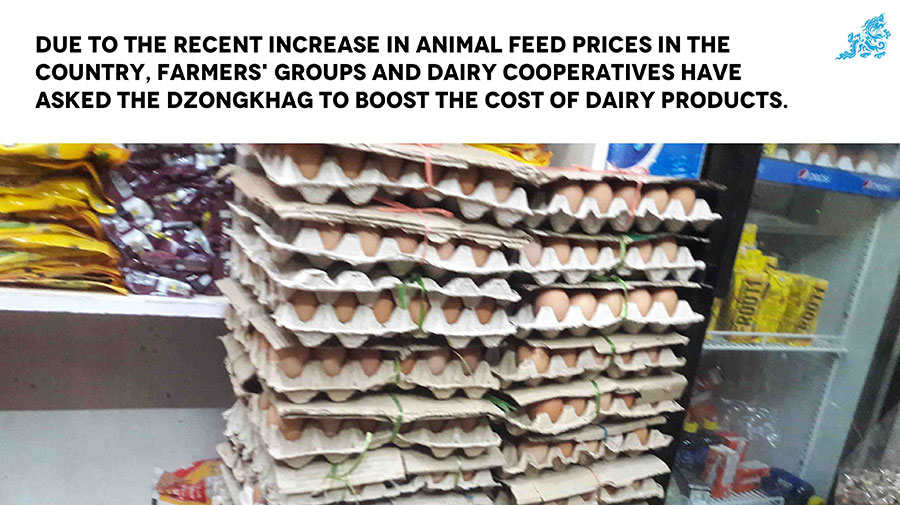… likely to increase dairy and poultry product price
Choki Wangmo
Following the increase in prices of raw materials in India, prices of poultry and pig feed increased by 10 percent and cattle feed increased by 5 percent on May 10.
The increase, according to Karma Feed’s director Chencho Wangyel, is mainly due to increased prices of soya bean meal, rice bran oil and mustard de-oiled cake. Bhutan imports 99 percent of these materials from India.
He said that the prices of protein-based secondary ingredients have drastically increased while there is a slight increase in other ingredients. A kg of feed costs Rs 70 in India compared to Rs 42 per kg in the past. Due to the volatile Covid-19 situation in India, soya bean production decreased in India, he said.
India Food Association has further forecast a price hike as high as Rs 100 a kg. This, Chencho Wangyel said, translates to one Rupee hike daily. “When prices increase in India, we have no choice but to raise it as well.”
He said that if Bhutanese are not dependent on the Indian market, the situation would be different. “If India decides to stop exporting ingredients, the situation will become uncertain for Bhutan.”
The company currently has ingredients reserves that will last for two months.
Bhutan produces one percent of the limestone powder which is used as one of the feed ingredients.
The price within Bhutan, however, is expected to differ from dzongkhag to dzongkhag considering the transportation, loading, and unloading charges.
The situation created by the price hike, according to the farmers and consumers, is unsustainable and worrisome. After the hike, dairy and poultry farmers reported different feed prices in different dzongkhags.
A poultry farmer in Chukha, Tenzin Thinley, bought 142 bags of feed from an agent in Darla to feed more than 1,500 poultry. A bag of feed costs him Nu 1,890, which is an increase of Nu 350. He said that he had to pay for transportation, loading and unloading charges, and Covid-19 protocol expenses. “There was an increase in feed but not the dairy prices. There is a mismatch of income and expenses.”
Farmers’ groups and dairy cooperatives have requested the dzongkhag to raise the prices of dairy products. “Raising the animal is difficult due to the feed price hike.”
A dairy farmer in Gelephu, Tenzin Norbu, bought reserve feed before lockdown. He still has 100kg of feed and uses 5.5kg daily to feed his five milking cows.
The price hike in his community, Tenzin Norbu said, was Nu 65. A bag of feed costs Nu 1,365 now.
Norbu Wangdi from Yuispang, Thimphu said that since there is no profit from the business in the current scenario, he would rather close the business than run on loss. “Many of the dairy farmers in rural areas will close their shops if the trend continues. Without a market, they are already at loss.”
A dairy farmer, Dorji Bidha, said that the impact will be adverse on shopkeepers and consumers if the situation doesn’t change. “We can’t increase the price of our products. Consumers will complain about the hike but they have to bear the brunt.”
A Punakha resident Sangay Dema said that the price of a ball of cheese might increase to Nu 100 and a kg of butter to Nu 750.
Thimphu resident Tashi Dema said that consumers were always on the losing end and they have no choice but to adjust. “We can’t do away without consuming processed imported products which are unhealthy. Local products are not accessible to everyone at this rate.”
A ball of cheese costs Nu 50 and a kg of butter costs Nu 500.
To address this challenge, Chencho Wangyel said that increased local production could be the way forward. He said that Bhutanese cannot produce 10MT of maize in a year, which is one of the major ingredients in the feeds. Monthly, Karma Feed produces about 38,000MT of feed.
“We have proposed to the agriculture ministry for increased maize production,” he said.


